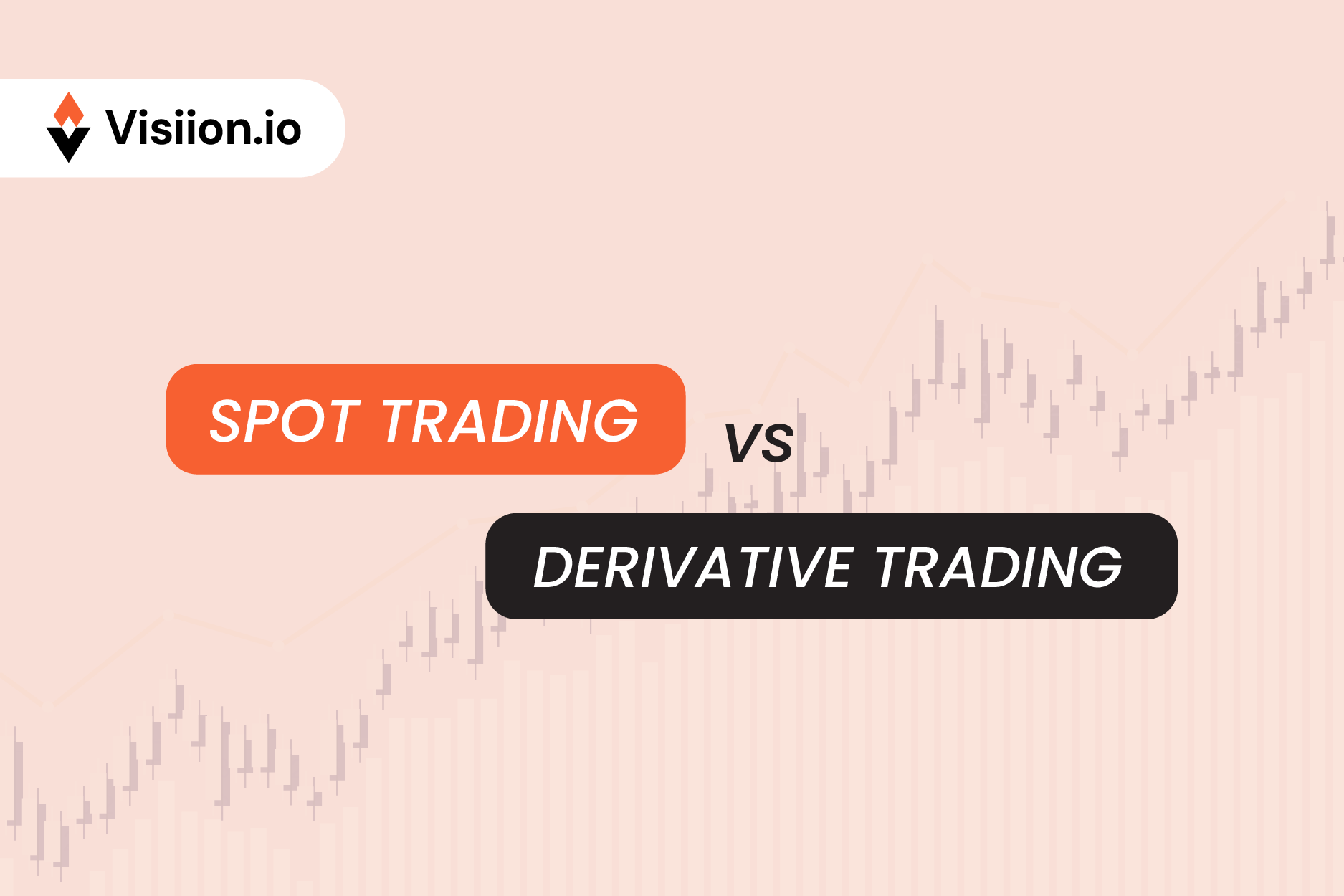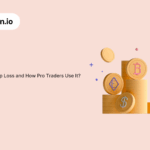Crypto Spot Trading Vs. Crypto Derivative Trading
There are numerous ways to trade any cryptocurrency. The most popular one is the spot trading. The second one, a little less popular, is the crypto derivative trading. If you are into any asset trading, you might have an idea about both of these methods.
But how exactly does crypto derivative trading in crypto work? What’s the difference between crypto derivative trading and crypto spot trading? Well, those are the exact questions we are going to answer in this blog.
So, let’s start with some basics first.
What Is Crypto Spot Trading?
Crypto spot trading is the direct exchange of cryptocurrencies. It’s pretty simple and easy. When you do spot trading, you buy and sell actual cryptocurrency. So, spot trading involves owning the asset or transferring it to someone else at any time. These transactions take place instantly on the exchanges at the market price.
Market prices are governed by the current demand and supply of the cryptocurrency you are trading. Cryptocurrency spot trading generally takes place in decentralized exchanges. These exchanges operate on smart contracts. So, the prices you see during these transactions reflect the real-time conditions.
What are the Advantages of Spot Trading?
- Straightforward process.
- No risk of liquidation.
- Full ownership of assets.
- Lower fees than crypto derivative trading.
Spot trading is an excellent option for beginners. You don’t need complex strategies and manage margin levels for spot trading. You also don’t have to worry about the contract expiry.
Drawbacks of Spot Trading
- No leverage. Profits depend on price movement.
- Larger capital is needed for significant returns.
- Limited opportunities in bear markets.
In simple words, cryptocurrency spot trading suits patient investors. It allows for long-term holding. However, it lacks the excitement and profit potential of crypto derivative trading.
Now, let’s take an example of crypto derivative trading.
What is Crypto Derivative Trading?
Crypto derivative trading does not require you to actually own the crypto you want to trade. Instead, you speculate on the price movements via various contracts. These contracts (generally called Futures or Options) are derived from a specific underlying asset. For cryptocurrency derivative trading, these contracts derive values from cryptos like Bitcoin, ETH or any other altcoin. When you do crypto derivative trading, you can take positions with leve3rage. This can amplify the potential profits. As you do not actually hold the cryptocurrency in the wallet, you can benefit from the price fluctuations of the underlying assets. This flexibility is what attracts traders to take trades and benefit from price movements on both sides.
What are the types of derivatives used in crypto trading?
Futures Contracts
Future contracts are agreements where you agree to buy or sell an asset at a specific price and on a specific date. These contracts determine the price when the contract is initiated. The final settlement happens when the contract expires.
Cryptocurrency derivative traders generally use future contracts to hedge against price volatility. Some traders also use these contracts to speculate on future market trends. What makes it unique is that you can participate in market movements on both sides.
For example:
BTC is trading at around $105,000 right now. Now, based on your trade setup, you expect it to reach $115,000 next month. In such a case, you can enter a future contract at the current price. If the price reaches your desired level of $115,000, you can make a big profit. While the difference will be $15,00, your profit will be bigger due to the leverage you took.
But at the side time, if the BTC price drops below $105,000 before the contract expires, you will incur loss in multiples of the leverage you took! In short, the higher the risk, the higher the reward.
One important thing to note here is that you will need a certain margin to trade future contracts. That’s why we strongly recommend traders use reliable platforms like Visiion.io that offer the right leverage and margin..
Perpetual Contracts
The perpetual contracts are a tad different from future contracts. Unlike future contracts, they do not have expiration dates, hence the name “Perpetual.” You can hold your positions as long as you want as long as you meet the minimum margin requirements of your trading platform. These contracts rely on a funding rate mechanism. This ensures the contract prices stay close to the spot market price. Traders pay or receive funding fees periodically depending on their position and market trends.
Perpetual contracts could be a good option for you if you are looking for long-term exposure without any rollover contracts. The only problem? You will need to monitor funding rates and margin balances carefully. If you don’t, you might end up staring at unexpected losses.
Options Contracts
Options provide the right, but not the obligation, to buy or sell an asset at a predetermined price before the contract expires. There are two main types: Call Options (which allow the purchase of an asset) and Put Options (which allow the sale of an asset).
Traders use options to hedge risk or leverage price movements with limited downside risk. The good thing about option contracts is that you don’t have to compulsorily execute them. If you think the market is moving against your expectations, you can always exit the trade, or you can let the contracts expire worthless. You will only lose the price that you paid for buying the contracts.
But the problem with Options Contracts is that they are highly volatile. Apart from the price movement of the underlying asset, expiry too impacts its price. So, the closer the expiry of options contracts comes, the more volatile moves you see in their pricing.
Swaps
Swaps are agreements where two parties exchange cash flows based on the price movement of an asset. In cryptocurrency trading, swaps help hedge risk or speculate on price differences between exchanges.
One common type is the interest rate swap, where traders exchange variable interest payments for fixed ones based on crypto lending rates. Crypto perpetual swaps, a popular instrument, allow traders to speculate on asset prices without needing to hold the asset itself.
Derivative trading offers flexibility and profit potential but requires an understanding of risks. Traders should implement strategies like stop-loss orders and proper risk management to navigate this complex market effectively.
What Is Leverage in Crypto Derivative Trading?
Leverage is an option where traders can buy bigger positions as compared to the cash they hold. For example, 10x leverage means you can buy a position worth $10,000 even if you have just $1,000 in your account. Here, the benefit is that you can make bigger profits. For example, if you use 10x leverage on your $1,000, you can take the position of up to $10,000. This means that even if you make a 10% gain, you double your actual investment value!
The only problem? Losses are in multiple of 10, too! So, if your trade makes a 10% loss, your overall loss will be 100%. That’s why it’s very important to plan and execute trades using leverage for crypto derivative trading. Profits multiply, but so do losses. Exchanges set liquidation thresholds if losses exceed collateral.
Example:
Let’s say BTC is trading at $105,385. A trader anticipates a price increase and opens a futures contract with 10x leverage. With $1,000 collateral, they control $10,000 worth of Bitcoin.
- If Bitcoin rises to $115,923.50 (a 10% increase), the trader makes a $1,000 profit (10% of $10,000).
- If Bitcoin falls to $94,846.50 (a 10% decrease), losses reach $1,000, leading to liquidation if the trader’s collateral cannot cover the loss.
Crypto Spot Trading vs. Crypto Derivatives Trading
| Feature | Spot Trading | Derivatives Trading |
| Ownership | Actual cryptocurrency | No real asset ownership |
| Settlement | Instant | Future Settlement |
| Leverage | Not available | Available |
| Risk Level | Lower | Higher due to leverage |
| Purpose | Investing, payments | Speculation, hedging |
| Expiry Date | No expiration | Futures and options have expiry |
Which One is Better?
Spot trading is a good option for the beginners. It provides security through direct ownership. Market downturns only impact portfolio value. Traders can hold assets long-term. Crypto derivative trading suits experienced traders. As you can use leverage, there is a chance of both higher gains and higher losses. So, risk management with crypto derivative trading is very important. Without a proper strategy, traders face liquidation.
How Can You Trade Both at Visiion.io?
Visiion.io offers crypto spot trading and crypto derivative trading. Our platform provides high liquidity and real-time execution. Traders can buy and sell instantly in the spot market. For spot traders, we offer deep order books. Users experience smooth transactions with minimal slippage.
Visiion.io provides advanced tools for derivatives traders. Leverage, stop-loss features, and risk management tools enhance control. The platform ensures security and efficiency.
How to Start Trading on Visiion.io?
- Create an Account:- Sign up and complete verification..
- Deposit Funds:- Add crypto or fiat currency to your wallet.
- Choose a Market:- Select spot or derivatives trading.
- Execute Trades:- Buy, sell, or open leveraged positions.
Final Thoughts
Spot trading is simple and secure. It’s perfectly suitable for long-term investors. But crypto derivative trading is more advanced. You’ll need a lot of practice, the right platform and the right tools to make good gains. While it does offer good profit potential, the risk factor is high, too.
So, before you get started with crypto derivative trading, make sure you are aware of your risk tolerance and related risks. Learn, practice, and trade wisely. The right strategy leads to financial success in cryptocurrency markets..









